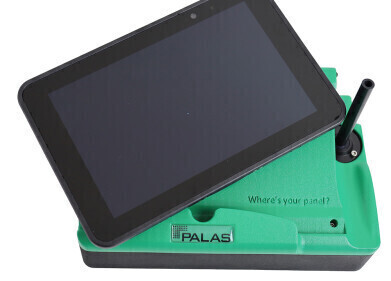Indoor air quality monitoring (IAQ)
How Does Indoor Air Quality Impact Public Health?
Sep 21 2021
Poor air quality is one of the biggest public health threats anywhere in the world. Prolonged exposure to pollutants such as particulate matter (PM), ozone and nitrogen oxides (NOx) can have significant impacts on human health, including the contraction or exacerbation of respiratory ailments and reduced life expectancy. In fact, poor air quality is thought to be responsible for up to seven million premature deaths per year.
But while the issues surrounding outdoor air pollution are well-documented, the air inside our own homes and businesses is often overlooked. When most people think of air pollution, they think of car exhaust fumes and power plant smokestacks. They don’t think of the accumulation of contaminants inside the buildings in which they spent the majority of their time – and that’s a huge mistake which must be addressed.
A silent killer
Given that most of us spend around 90% of our lives indoors, it should come as no surprise that indoor air quality is a bigger killer than ambient pollution. Indeed, the World Health Organisation estimates that indoor air quality is directly linked to as many as 4.3 million deaths each year, dwarfing the figure which succumb to poor quality air outside their homes.
This death rate isn’t uniform across the board, however. In fact, it’s believed that there is up 1,000 times the number of deaths in low-income and high-income countries, reflecting how it’s a problem that is far more pronounced in the developing world. This is likely due to the fact that impoverished families often rely on burning wood, plastic and other toxic materials to generate heat in their homes, while they cannot afford air purifying technology. Much of the time, they aren’t even aware of the problem at all, meaning that education surrounding the issues must be a priority for the governments in question. Having said that, it is by no means a problem confined to the third world.
What can be done?
Much of indoor air pollution derives from the activities of the occupants of the building in question. Cooking, painting, cleaning and smoking all contribute significant amounts of contamination to an enclosed environment, which then has nowhere to go and builds up over time. Substituting toxic substances for more organic and natural alternatives is one way to reduce the pollution incurred during cleaning and painting.
Meanwhile, ventilation is another key consideration. Something as simple as switching on an extractor fan while cooking or opening doors and windows during or after rainfall can help to clear the airways and minimise indoor air pollution as much as possible. At the same time, the scientific community are always on the lookout for new and innovative ways to mitigate the ill-effects of air pollution, including modifying the design of buildings to increase airflow and reduce the potential for contaminants to accumulate. For more information on the latest developments in this area, the upcoming talk INDAIRPOLLNET: Driving indoor air pollution research in Europe contains much useful information.
Digital Edition
IET 35.2 March
April 2025
Air Monitoring - Probe Sampling in Hazardous Areas Under Extreme Conditions - New, Game-Changing Sensor for Methane Emissions - Blue Sky Thinking: a 50-year Retrospective on Technological Prog...
View all digital editions
Events
May 10 2025 Karachi, Pakistan
May 11 2025 Vienna, Austria
May 11 2025 Seoul, South Korea
Salon Analyse Industrielle & Instrumentation
May 14 2025 Paris, France
May 15 2025 Istanbul, Turkey













_(4427399123)-(2).jpg)





